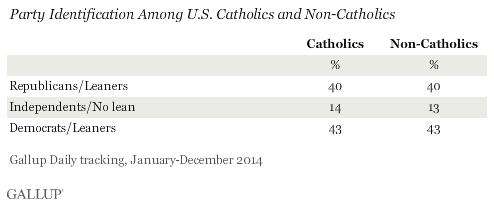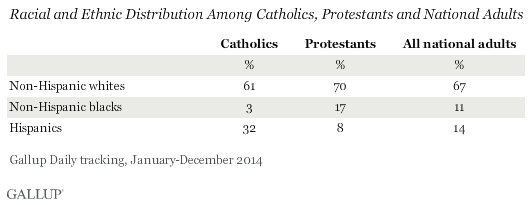As Pope Francis Visits the US, Here Are 5 Facts About American Catholics
Kate Scanlon /
Gallup has released a list of five facts about American Catholics in honor of Pope Francis’ first visit to the United States.
According to Gallup’s report:
- Twenty-three percent of the United States’ adult population is Catholic.
Gallup has tracked the percentage of Catholics since 1948 and says the number “has remained fairly steady” since then, averaging at 25 percent.
- American Catholics are most heavily concentrated in the eastern United States.
Francis will visit New York, Pennsylvania, and Washington, D.C. According to Gallup, 36 percent of the population of New York is Catholic, while 28 percent of Pennsylvania’s and 20 percent of D.C.’s population is Catholic.
Gallup adds that Rhode Island has the highest percentage of Catholics at 45 percent, and Mississippi has the lowest at 8 percent.
- The political affiliation of American Catholics reflects that of the overall population.
Gallup’s report states that the political affiliation of American Catholics “is remarkably similar to what is found in the overall population.”
In 2014, the percentages of Catholic Republicans and Catholic Democrats matched the percentages of the general population. The percentage of independents was off by one point.
For comparison, Protestants, Mormons, and Jews are more likely to identify with one political party than the other.
- Thirty-two percent of Catholics in the United States are Hispanic.
According to Gallup, “the majority of Hispanics identify as Catholic.” Sixty-one percent of Catholics surveyed identified as white and 3 percent as black.
For comparison, of Protestants surveyed, 8 percent identified as Hispanic, 17 percent as black, and 70 percent as white.
- Catholics and Protestants are just as likely to attend church weekly.
Of those surveyed, 44 percent of Catholics and 45 percent of Protestants told Gallup they had attended church services within the last week.
According to Gallup, historically, Catholics were more likely to attend church services weekly, but they “lost their church attendance advantage over Protestants in the 1990s.”



